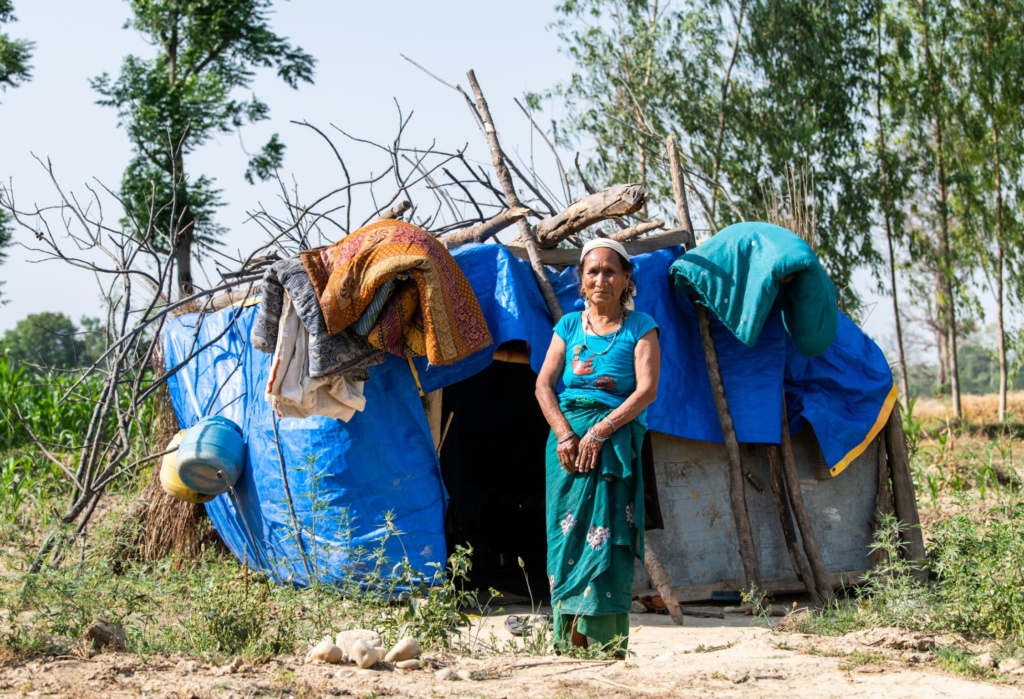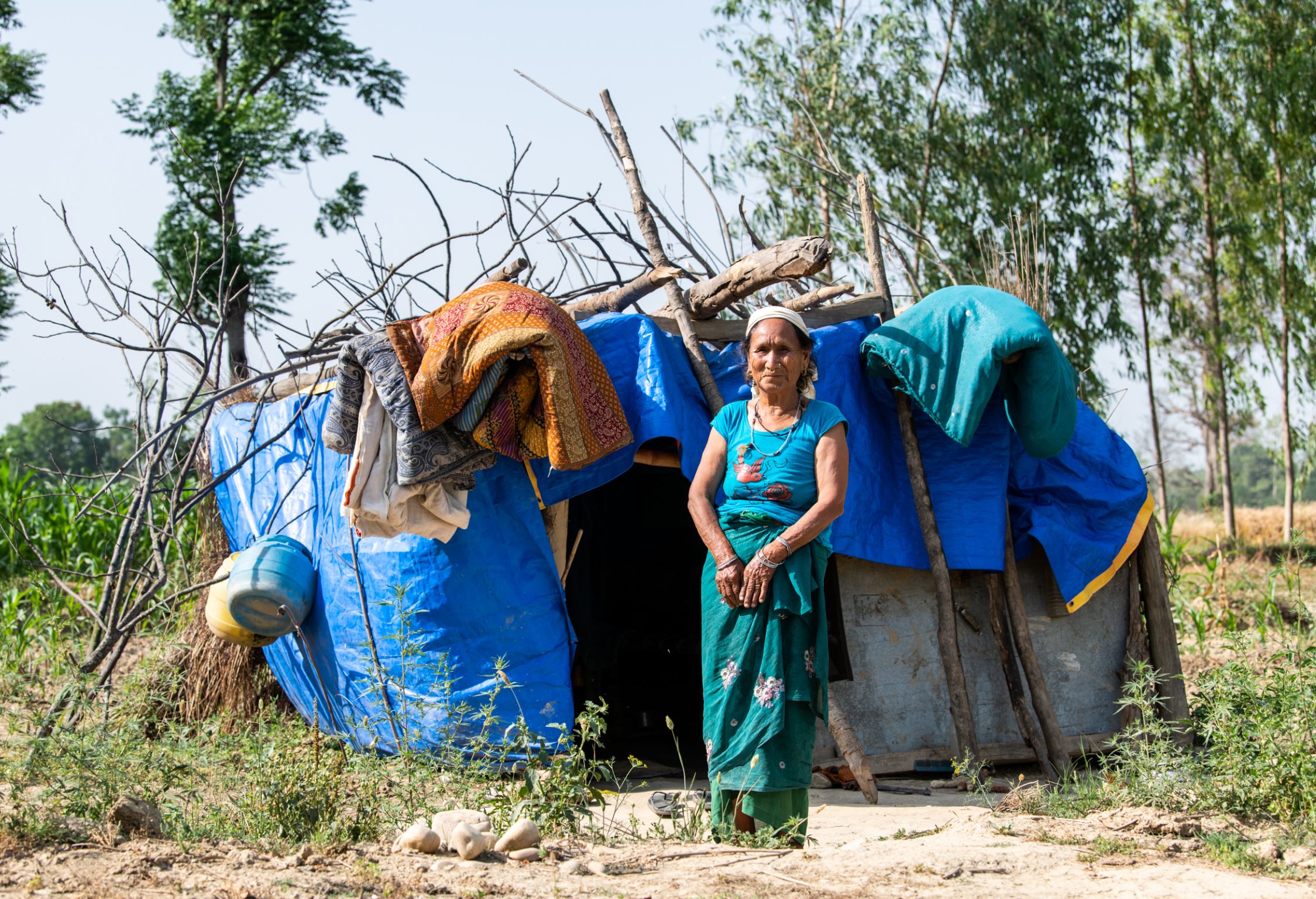How Housing Affects Health
Habitat for Humanity’s mission is to build and improve the places families call home, as this is critical to sustaining healthier, equitable and resilient communities for generations to come. The nature of a house has a decisive role in the health and safety of residents, affecting disease development and transmission, access to services and mental health. However, currently, 1 in 4 people live in conditions that harm their health and safety, with this number only serving to grow in the future due to demographic changes and climate change [1]. Demographically, by 2050, the number of people aged 60 years or over who spend a larger proportion of their time at home will double [2]. On top of that, changing weather patterns due to climate change means that robust housing structures will become increasingly important, to provide protection from cold, heat and extreme weather events.
Habitat for Humanity recognises this direct link between housing and health. Our programs focus on building and repairing homes as well as supporting people to independence. These programs therefore address the four main housing factors that impact health: housing quality, affordability, location and space.
——-
Housing quality
Housing quality in terms of its hardware and physical features such as heating, ventilation, plumbing and access to cooking and washing facilities is a large contributor to poorer health outcomes both physically and mentally, in a variety of ways such as [3]:
The heat: Heat poses an extreme hazard across the world, but especially in Australia. In Australia, the death toll from extreme heat events is greater than those from all other natural disasters combined (such as bushfires, floods). For instance, more people died from the heatwave that preceded Victoria’s Black Saturday bushfires of 2009 than the number who died from the bushfires themselves, with deaths occurring due to heatstroke, dehydration, and the fact that heat stress worsen chronic conditions and existing mental disorders [4]. The aging population is particularly vulnerable to the danger posed by heat, and the health effects of heat are only expected to get more severe in the future due to climate change [5].
The cold: Due to rapidly rising fuel costs and poor energy efficiency in existing homes, many suffer from inadequate housing insulation and heating. This is harmful as cold homes have been shown to increase the risk of cardiovascular, respiratory and rheumatoid diseases, as well as worsened mental health [2]. For example, in the UK there is an estimated 40,000-50,000 excess winter deaths a year [6]. 21% of these are attributed to low indoor temperatures due to structural and heating weaknesses of homes [7]. Similar cases of excess winter mortality can be found in the Baltic countries, in Eastern Europe, in Central Asia and other countries such as France, Germany, or Portugal. Closer to Australia, a randomized trial in New Zealand investigating existing chronic respiratory symptoms found that better insulation was associated with reduced odds of poor mental health, self-reported wheezing in the previous 3 months, winter colds or flu, and morning phlegm in adults [2].
Additionally, mental health is also impacted by the cold, with a large-scale, cross-sectional World Health Organisation housing study across Europe finding a relationship between depression/anxiety and living in a dwelling with insufficient insulation and a lack of light [8].
Dampness: Dampness also has been linked to respiratory problems, allergies and asthma, with research finding that people with asthma were twice as likely to live in homes with damp than those without [7].
The financial means to repair housing infrastructure: There is extensive evidence showing that when people move into better quality housing that their mental health improves [9]. For example, a particular study by Evans, Wells, Chan, & Saltzman finding that the degree of improvement in housing correlated with the level of change in psychological distress [10].
Access to water and sanitation- Diarrhoeal diseases alone amounts to an estimated 3.6% of the total disability-adjusted life year global burden of disease annually and is responsible for the deaths of 1.5 million every year [2]. It is estimated that 58% of this toll, or 842 000 deaths per year, is due to inadequate water supply, sanitation and hygiene, mostly in low- and middle-income countries. Children are at particular risk of water-borne diseases, which then impacts also their education and school attendance and future.
Injury hazards: Falls account for the largest proportion of injuries within the home that require medical assistance. 424 000 individuals die each year from falls worldwide, and 26% of falls in high-income countries and 31% of falls in low and middle-income countries being due to factors within the house. These include uneven floor surfaces, steep stairs, lack of guarding, inadequate lighting, lack of handles and windows and doors without child safety locks. Hence, simple aspects of home design can impact injury occurrence and health [6].

Housing affordability
Housing is considered to be “affordable” when less than 30% of a family’s income is spent on renting or buying a residence. Without affordable housing prices, families are limited to substandard housing in unsafe, overcrowded neighbourhoods with higher poverty rates and less health-promoting resources such as parks and bike paths [10]. In addition, unaffordable housing creates financial strain for families, forcing them to choose between food, heating and other basic needs. As a consequence, a lack of housing affordability has been proven by studies to lead to health impacts such as:
Children in areas with higher rates of unaffordable housing had worse health and more behavioural problems [11].
Low-income people with difficulty paying rent, mortgage or utility bills were less likely to have a regular source of medical care and more likely to postpone treatment and use the emergency room [11].
Experiences common to stressed renters and purchasers affect general health and wellbeing, in particular constant stress associated with financial hardships. This contributed to health problems, adequate health care and family relationships [12].
The lack of secure housing also affects health, with one Australian study finding that people in rental accommodation were more likely than homeowners to report fair/poor health than homeowners. More generally, the wellbeing of renters is below the normal range across Australian demographics, particular for older renters between 45-55 years old and single parents [9].
Housing affordability stress is prevalent across tenures in Australia. For example, forty per cent of first home buyers in Sydney and Hobart were priced out of their property market [10].
Housing location
The social, physical and economic characteristics of a home’s location also has powerful effects on both short and long term health quality and longevity. This is because it influences aspects of health such as [9]:
Mental health- Often, location relates to whether social interactions are controllable or not, as well as stigma associated with poor housing, and whether there is urban design that is beneficial to health, such as street lighting. All of these affect real and perceived personal safety, which is strongly related to mental health[9]. As a consequence, a review of 23 studies, the location of a house influences anxiety about structural hazards or a fear of crime [9]. On a related note, high-rise apartment complexes have been found detrimental to psychological wellbeing, identity and self-esteem, particularly to mothers and children due to social isolation and lack of access to play spaces.
Access to services- A neighbourhood’s characteristics may promote health by providing play and exercise areas, and an environment free from crime, violence and pollution. Access to fresh produce from grocery stores, and lower numbers of liquor and fast food outlets also may make it easier to eat healthier. Due to not all neighbourhoods enjoying these opportunities and resources, those without health-promoting conditions report lack of physical exercise, increased prevalence of obesity, cognitive problems in children, and a loss of the ability to socialise [6].
Disparities in health- racial, ethnic and socioeconomic disparities in health are further compounded when substandard housing in concentrated in less advantaged neighbourhoods [10].
Overall, residents of disadvantaged areas overall experience greater stress as they experience social disorders due to a combination of environmental influences.
Housing space
The Australian government defines overcrowding as there being more than two persons per bedroom [12]. Overcrowding as a whole has been cited to result in it being much harder to maintain hygiene and sanitary practices due to close contact with others and shared furniture, linen, and so on.
As a result, overcrowding in living spaces rapidly increases the likelihood of disease transmission, with people living in overcrowding infrastructure being 10 times more likely to contract meningitis and three times more likely to have respiratory problems [13]. Over the long-term, overcrowded homes have been linked with slow growth in children which correlates with an increased risk of heart disease as an adult. Some facts that show the impact of overcrowding are how approximately 10% of hospital admissions per year in New Zealand are attributable to household crowding and how in 2012 In Kyrgyzstan, household crowding causes 18.13 deaths per 100 000 from tuberculosis (TB) per year [7].
With specific reference to Australia, remote areas in Australia, overcrowded households are associated with a 2.4 fold increased risk of chronic ear infections. Overcrowding also affects Aboriginal populations more so than other demographics, with 14% of Aboriginal and Torres Strait Islander people in remote areas cited overcrowding at home as this type of stressor, compared to 9% of those living in non-remote areas [2].
“Where you live may be your strongest predictor of your health. We are thinking more and more about housing as something that we need to be investing in and supporting to improve the health of our patients.” – Dr. Megan T. Sandel [14].
With all these facts in mind of the effect of housing on health, it is clear that Habitat for Humanity Australia’s aim remains pertinent in our modern world, to help families ensure their wellbeing and independence.
Volunteer with us and make a real impact in your community: https://helpinghands.online/
References
https://www.habitat.org/our-work/impact/how-housing-affects-health
https://www.who.int/publications/i/item/9789241550376
https://www.vichealth.vic.gov.au/-/media/ResourceCentre/PublicationsandResources/Health-Inequalities/Housing_and-_Health_Research-Summary_web.pdf?la=en&hash=42ABE51F99703B698663E4368306FA4B34652DA8
https://www.smh.com.au/opinion/heatwaves-are-more-deadly-than-bushfires-and-theyre-going-to-get-worse-20161212-gt9fyl.html
https://d3n8a8pro7vhmx.cloudfront.net/betterrenting/pages/181/attachments/original/1580794943/Home_Baked_Housing_Heat_Health_2.8.pdf?1580794943
https://www.euro.who.int/__data/assets/pdf_file/0017/121832/E90676.pdf
https://www.theguardian.com/society-professionals/2014/aug/08/housing-problems-affect-health
https://aifs.gov.au/cfca/publications/housing-stress-and-mental-health-and-wellbeing-famili#resources
https://aifs.gov.au/cfca/publications/housing-stress-and-mental-health-and-wellbeing-famili#resources
https://www.rwjf.org/en/library/research/2011/05/housing-and-health.html
https://www.tandfonline.com/doi/abs/10.1080/10511482.2005.9521542
https://www1.racgp.org.au/newsgp/racgp/overcrowding-a-key-determinant-of-poor-health-outc
https://www.who.int/water_sanitation_health/emergencies/qa/emergencies_qa9/en/



